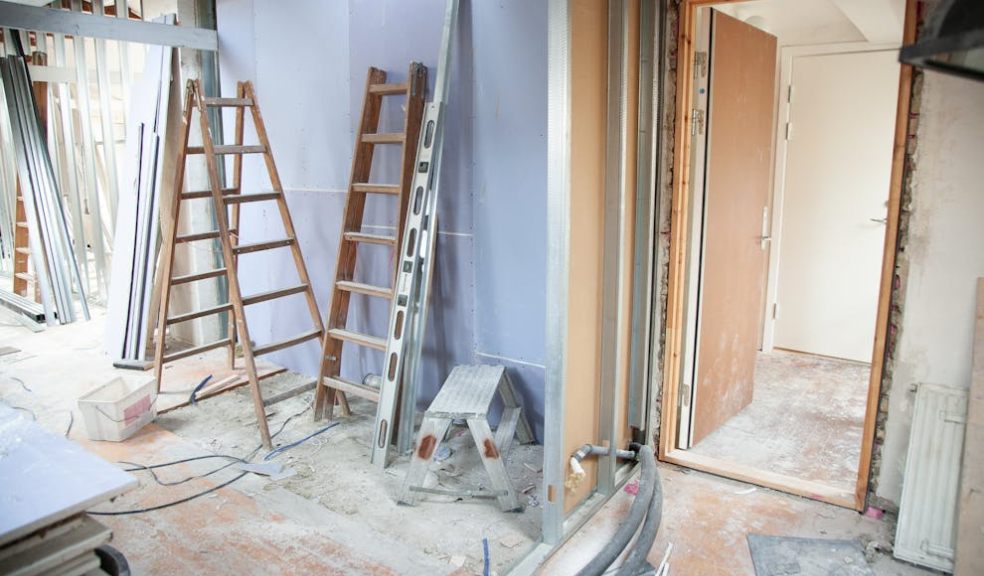
Building a Home Addition: A Step-by-Step Guide
Building a home addition can be a fantastic way for homeowners to expand their living space without the hassle and expense of moving. Whether you need a home office, an extra bedroom, or a gym, an addition can enhance the value of your property. However, it's essential to approach this project with careful planning and a clear understanding of the steps involved.
This guide will take you through the essential steps to successfully build a home addition.
1. Foundation Work
The foundation is a critical component of your home addition, providing the necessary support for the entire structure. Depending on your soil type and the size of your addition, you may need a different type of foundation, such as a slab, crawl space, or full basement.
Begin by excavating the area to the required depth, ensuring the ground is level and stable. Proper excavation is vital to prevent settling and shifting, which can lead to structural issues down the line.
2. Lay the Concrete Floors
Once the excavation is complete, you can pour the concrete for the foundation. This process involves creating forms to shape the concrete and reinforcing it with steel bars for added strength. Allow the concrete to cure properly before proceeding to the next steps, ensuring a solid and reliable base for your home addition.
However, it's essential to damp-proof your concrete floors. Moisture and dampness can cause significant damage to your addition, leading to mould growth and structural issues. To prevent this, you should use a damp-proof membrane (DPM) like the Visqueen EcoMembrane. This product is designed to protect buildings against moisture and dampness. It can be positioned above or below the structural floor, providing an effective barrier that safeguards your home addition. Using Visqueen EcoMembrane ensures that your concrete floors remain dry and intact, creating a healthy and durable foundation for your new space.
3. Framing the Structure
Framing provides the skeleton of the building, defining its shape and supporting the roof, walls, and floors. This stage involves constructing the walls, floors, and roof using timber or steel, depending on your design and local building codes.
Start by building the floor frame, securing it to the foundation. Next, erect the wall frames, ensuring they are plumb and square. The wall frames will include spaces for windows and doors, so it's essential to measure and position these openings accurately. Finally, construct the roof frame, which will support the roofing materials and provide protection from the elements. Proper framing is crucial for the structural integrity of your home addition, so take your time and ensure everything is aligned and securely fastened.
4. Roofing Installation
Once the framing is complete, you can move on to installing the roof. The roof plays a vital role in protecting your home addition from weather conditions and providing insulation. There are various roofing materials to choose from, including asphalt shingles, metal, and tiles. Each material has its benefits, so consider factors like durability, cost, and aesthetics when making your decision.
Begin by laying the roofing underlayment, which acts as a moisture barrier and provides an extra layer of protection. Next, install the roofing material of your choice, following the manufacturer's guidelines and ensuring proper overlap and sealing. A well-installed roof will keep your home addition dry, secure, and energy-efficient for years to come.
5. Installing Windows and Doors
After completing the roof installation, the next step is to install windows and doors. Windows and doors are essential for providing natural light, ventilation, and access to your new space. They also play a crucial role in the overall energy efficiency and security of your home addition.
When selecting windows and doors, consider energy-efficient options that can help reduce heating and cooling costs. Double-glazed windows, for example, offer excellent insulation and noise reduction. Additionally, choose materials that complement the existing style of your home to ensure a cohesive look.
Start by measuring and cutting openings in the framed walls to fit the windows and doors. Install the window frames first, ensuring they are level and securely fastened. Apply a waterproof sealant around the edges to prevent water infiltration. Next, insert the window panes and secure them in place. For doors, install the door frame and ensure it is plumb and level before attaching the door itself. Proper installation of windows and doors is vital for maintaining the structural integrity and weatherproofing of your home addition.
6. Insulation and Drywall
Begin by selecting the appropriate insulation material for your walls, floors, and roof. Common options include fibreglass batts, foam boards, and spray foam. Install the insulation between the wall studs, ceiling joists, and floor joists, ensuring there are no gaps or voids. Proper insulation installation is crucial for maximising energy efficiency and comfort.
Once the insulation is in place, it’s time to install the drywall. Drywall, also known as plasterboard, is used to create smooth, finished walls and ceilings. Secure the drywall sheets to the wall and ceiling frames using screws or nails. After installation, apply joint compound to the seams and screw heads, then sand the surface to achieve a smooth finish. Finally, the drywall can be primed and painted, creating a clean canvas for your interior design.
7. Interior Finishing
Start by selecting and installing flooring materials. Options include hardwood, laminate, tile, or carpet, depending on the intended use of the space and your personal preferences. Next, apply paint or wallpaper to the walls and ceilings. Choose colours and patterns that complement your existing home decor to create a cohesive look.
Install trim work, such as baseboards, crown molding, and window and door casings, to add a polished finish to your interior. These details not only enhance the aesthetics of your home addition but also protect the walls from damage. Finally, add any built-in cabinetry, shelving, or other custom features that enhance the functionality and style of your new space.
8. Exterior Finishing
Begin by selecting exterior siding materials. Common options include brick, vinyl, wood, and fibre cement. Choose a material that matches or complements your home's current exterior to maintain a consistent look. Install the siding according to the manufacturer’s guidelines, ensuring it is properly sealed and weatherproofed.
Next, focus on any exterior trim and details, such as fascia boards, soffits, and gutters. These elements not only enhance the appearance of your home addition but also provide necessary protection against weather damage. Finally, consider adding landscaping features, such as walkways, gardens, and outdoor lighting, to enhance the curb appeal of your new space.
Conclusion
Building a home addition is a significant undertaking that requires careful planning, skilled execution, and attention to detail. By following the steps outlined in this guide, homeowners in the UK can create a beautiful and functional addition that enhances their living space and increases the value of their property. From obtaining permits and laying the foundation to installing windows and doors and completing the interior and exterior finishes, each phase is crucial to the success of your project. With the right planning and professional help, your home addition will become a valuable and enjoyable part of your home, providing the extra space and functionality you need.













